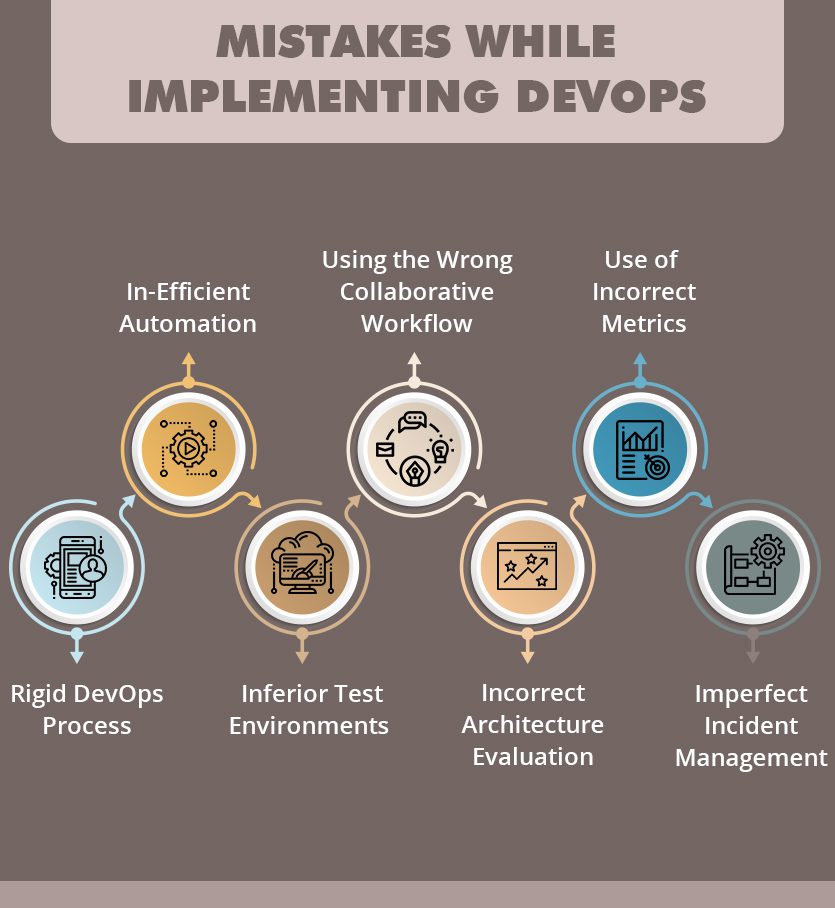
Click to learn more about author Harikrishna Kundariya.
“A phased approach to continuous delivery is not only preferable, but it’s also infinitely more manageable.” – Maurice Kherlak
Organizational architects nowadays are banking more on DevOps for their successful digital transformation. With DevOps, organizations know where they are in maturity and how to advance further. It transcends the culture, automation, tools, and processes of organizations.
DevOps has become a movement where it is a necessity now, rather than a supplement. It is the bridge connecting innovation and execution, which leads to success. In this fast technology-driven world, only development and operation collaboration could ensure victory. None other than Steve Jobs can confirm it:
“Great things in business are never done by one person, they are done by a team of people.”
Collaboration is the need of the hour since the path to success is not a linear one. Quantity and quality of an organization’s functions could be enhanced by experimentation with DevOps. Changes in the software could get taken in minutes with the continuous instant feedback.
“Everyone thinks of changing the world, but no one thinks of changing himself,” said Leo Tolstoy, is the base of DevOps. Execution gets facilitated by continuous feedback for real-time changes by developers. It increases productivity with less time spent on checking the codes.
Nowadays, many companies implement DevOps transition. It is because of the paradigm shift of mindset and culture of both the development and execution teams. DevOps ability for instant decisions enhances the leverage of failures as opportunities.
IT leaders believe software releases get accelerated with DevOps. Also, without any let down in the application’s quality objectives. This continuous deployment and delivery increases many functions. It includes the reliability, stability, and resilience of the production environment. It is the reason 58% of companies use DevOps to accelerate delivery speed.
Concepts of DevOps
What makes DevOps so unique?
The answer is in its capabilities like:
- Continuous service delivery
- Reducing errors by improving quality
- Facilitating fantastic communication and collaboration
The following are a few DevOps Concepts:
CI
CI or Continuous Integration is the developer’s practice to integrate their code regularly and frequently into a shared repository. It is an automated build typically through a CI system to detect errors by verifying the code.
CT
CT or Continuous Testing gives instant feedback on the risks involved with a software release candidate through automated testing.
CM
CM or Continuous Monitoring detects compliance and risk issues of the organization’s operational environment. It includes processes, people, and systems integration to provide useful operations.
CD
CD or Continuous Delivery of DevOps enables the following:
- Get new features
- Fix bugs
- Configuration changes
All this and many more run in real time into the user’s hands in a reliable and replicable way.
Can All Organizations Implement DevOps?
It is the question going on the rounds for the past few years. Many are unsure of its advantages because they lack the knowledge for its successful implementations. Also, it seems alien to many traditional people to develop hostility to its enforcement.
It has prevented many for a successful organization change with the advantages of DevOps. It can be well understood from the adage of Trevor Paglen about automation.
“I think the automation of vision is a much bigger deal than the invention of perspective.”
The end to end vision is necessary for implementing DevOps of changing ideas to action, the code to cash, and, manual testing to automation. It requires controls to get incorporated into the product creation and release process. It needs a massive cultural shift to overcome the hostility to implement DevOps.
What Are the Mistakes That Could Be Committed While Implementing DevOps?
DevOps failures are due to individual mistakes while implementing it in organizations. They include a lack of complete vision & proper strategy, tools, and knowledge of DevOps. There will be mistakes during any organizational change, but it should only get utilized as a tool for future success. It is clearly understood from the following adage by Albert Einstein.
“Anyone who has never made a mistake has never tried anything new.”
The following are the seven common mistakes while implementing DevOps:

1. Rigid DevOps Process
Organizations should follow the DevOps principles for their success. Without it, the process becomes inflexible and hence unsuccessful. It happens due to the following reasons:
- No intelligent or proactive adjustments to organizations demands.
- No proper instrumentation of codebases in a granular manner.
- No appropriate partitions of codebases for DevOps to give the flexibility to backtrack and identify the primary cause of diversion.
- Adjustments not made within the boundaries defined by DevOps.
- Inefficient optimization of resources.
- Most of the organizations develop a separate team for DevOps operations. It only complicates things. Even though the DevOps methodology is complex should not opt for it. They should optimize their process by leveraging the right resources to create operational products.
2. Inefficient Automation
Organizations should adopt purposeful and efficient automation, unlike done in silos. Automation should be taken throughout the development cycle, which includes CI, CD, CM, and, CT for speed and quality changes.
3. Inferior Test Environments
DevOps to function successfully should have separate test and production environments. But should maintain the similarity of the environment. Only this will make DevOps function from the start of the development process. To enable the performance of applications in different machines, the simulation of the production environment is necessary.
4. Using the Wrong Collaborative Workflow
Keeping different conceptual flavors like sandboxes of feature-based development makes DevOps more complex. Trunk-based development is the right collaborative workflow to increase deployment frequency. Also, it enables all developers to check through a single window.
5. Incorrect Architecture Evaluation
Automation loses its value when the time taken for deployment is longer. With the appropriate architectural support, it could get avoided. Also, it will give the developers enough freedom and flexibility to deploy parts of the system independently. Only this could avoid the system break down.
6. Use of Incorrect Metrics
For successful DevOps function, the right metrics which align velocity with throughput success should get used. The wrong metrics will lead to failure of the DevOps program. It is because acceleration gets done at the cost of quality.
7. Imperfect Incident Management
Only with an intelligent management process can DevOps define incident responses. Incident management has to be adequately documented to be proactive for the success of DevOps implementation.
This is the first part of a two part article on DevOps, Part Two coming soon.
